How the Germans developed missiles after the Lake Seliger war
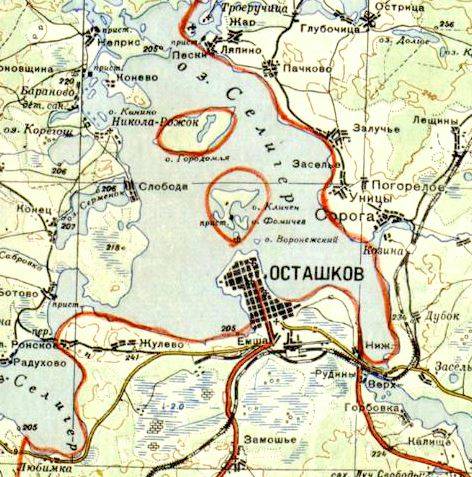
In accordance with the requirements of the allies to comply with the decisions of the Crimean Conference on the demilitarization of Germany, in April 1946 the Council of Ministers of the USSR adopted a resolution on the transfer of all work on military equipment from Germany to the Soviet Union (How the Nazi FAU missile program became the base of the Soviet rocket and space program), in pursuance of which, in October 1946, about 7 thousand specialists (in addition to their families) in rocket technology, nuclear physics, aircraft construction, aviation engines, optical instrumentation were exported to the Soviet Union.
About 150 specialists in rocket technology and up to 500 members of their families were deported to Kaliningrad (Podlipki) near Moscow, where NII-88 was located, which was implementing the Soviet rocket program.
Branch number 1 on Gorodomlya Island and its tasks
By order of the Minister of Armaments No. 258 of August 31, 1946, this research institute was transferred to the balance of the building of the former Sanitary-Technical Institute, on the basis of which Branch No. 1 of the Research Institute-88 was formed, where German specialists were supposed to work.
At the end of 1946, the first group began work in this branch. The rest of the specialists and the former deputy of Werner von Braun - Grettrup were transferred there in January - May 1948.
The branch was located on Gorodomlya Island 1,5x1 km in size on Lake Seliger near the town of Ostashkov in the Kalinin Region. In the buildings of the branch, several laboratories were equipped and a test stand for testing V-2 rocket engines, as well as the necessary measuring instruments, was installed, which was taken out by parts from Germany.
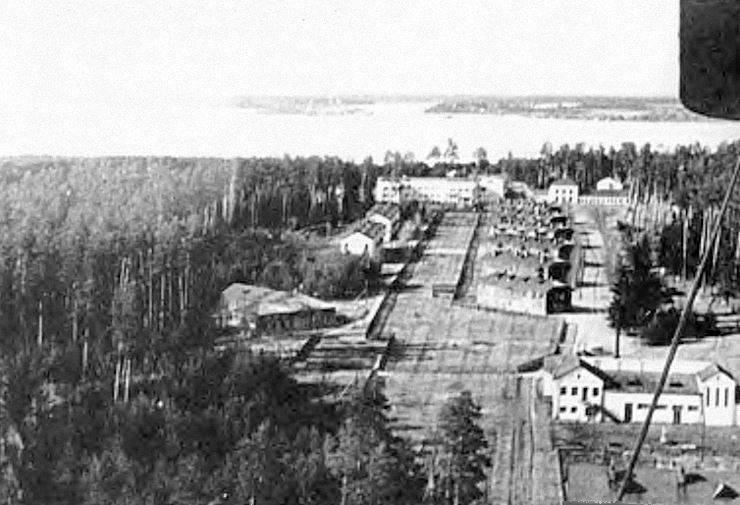
Branch number 1 on Gorodomlya Island
The following tasks were assigned to the German specialists:
- to assist in the reconstruction of technical documentation and reproduction of the V-2 rocket;
- to develop projects of new rocketry products, using their experience and knowledge in this area;
- to design and manufacture simulating installations and various measuring equipment for individual tasks of the NII-88.
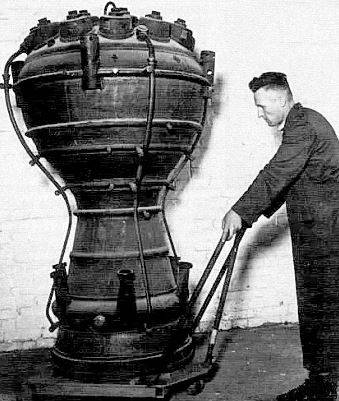
V-2 rocket combustion chamber
Petr Maloletov, former director of plant No. 88, was appointed director of the branch, and Yuri Pobedonostsev as chief engineer. The German side was led by Grettrup. As the chief designer, in pursuance of the institute's assignments, he drew up plans for the work of the branches of the branch and coordinated their activities. In his absence, the work was supervised by Dr. Wolf, the former head of the ballistics department at Krupp.
The group included prominent German scientists in thermodynamics, radar, aerodynamics, gyro theory, automatic control and steering gear. Branch No. 1 enjoyed the same rights as other departments of the institute, it had the sectors of ballistics, aerodynamics, engines, control systems, missile testing and a design bureau.
Rockets developed by German specialists
For reasons of secrecy, the Germans were not allowed to the results of the work and experiments of Soviet specialists. Both were forbidden to communicate with each other. The Germans constantly complained that they were cut off from work at the institute and the main processes taking place in the missile industry.
An exception was made only once - for the participation of a limited circle of people in October 1947 in the successful launches of V-2 missiles at the Kapustin Yar range. Based on the results of the launches in December 1947, Stalin signed a decree on awarding German specialists who distinguished themselves in the launch of V-2 missiles in the amount of a three-month salary. And he ordered to pay specialists bonuses for the successful solution of the tasks assigned to them in the amount of 20% of the wages fund.
In 1946 and the beginning of 1947, the management of NII-88 drew up a thematic work plan of the branch, which included consultations on the release of a set of documentation for the V-2 in Russian, drawing up diagrams of research laboratories for ballistic and anti-aircraft missiles, studying the issues of forcing the V-2 engine, developing a project engine with a thrust of 100 tons.
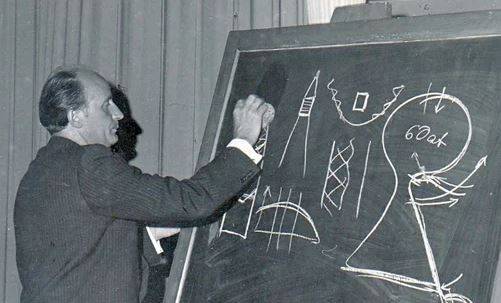
Helmut Grettrup before discussing project tasks
At the suggestion of Grettrup, they were given the opportunity to test their creative powers and develop a project for a new ballistic missile with a range of 600 km. The rocket project was assigned the G-1 (R-10) index. The chief designer of the rocket was Grettrup.
By the middle of 1947, the preliminary design of the G-1 was developed. And in September it was considered at the Scientific and Technical Council of NII-88. Grettrup reported that a missile with a range of 600 km should be a stepping stone for the subsequent development of long-range missiles. The missile was also developed for the same range by Soviet specialists with the maximum use of the V-2 reserve. Grettrup suggested developing both projects in parallel and independently of each other. And bring both to the manufacture of prototypes and test launches.
The main features of the G-1 project were the preservation of the dimensions of the V-2 with a significant increase in the volume for fuel, a simplified on-board system and maximum transfer of control functions to ground radio systems, increased accuracy, separation of the warhead on the descending branch of the trajectory. High accuracy was provided by a new radio control system, the speed was adjusted by radio on a straight line of the trajectory.
Due to the new design of the rocket, its mass decreased from 3,17 tons to 1,87 tons, and the mass of the warhead increased from 0,74 tons to 0,95 tons. Despite all the advantages of the project, the NTS decided on a comprehensive "bench" check constructive solutions, which in the conditions on the island of Gorodomlya was practically impossible to implement.
At the same time, from the end of 1947, Korolev in Podlipki was already in full swing designing the R-2 rocket with a range of 600 km.
The draft design of the G-1 was revised and refined, the range reached 810 km and the accuracy increased dramatically. In December 1948, NTS NII-88 again discussed the G-1 project. But the decision on the project was never made.
In the same period, the Grettrup group was working on the idea of creating a G-2 (R-12) rocket with a range of 2500 km and a warhead weight of at least 1 ton. The propulsion system for such a rocket was proposed to be made in the form of a block of three G-1 engines. And thus to obtain a total thrust of more than 100 tons. Several variants of the rocket with one- and two-stage configuration and with a different number of engines were considered.
In this project, it was proposed to control the rocket by changing the thrust of the engines located along the periphery of the rocket tail. This idea was first implemented on the Soviet "lunar" rocket N-1, more than 20 years later.
German aerodynamicist Dr. Werner Albring proposed his project for the G-3 long-range missile. The first stage of the rocket was to be the G-1 rocket, the second stage was a cruise missile. This missile could deliver a 3000 kg warhead to a range of up to 2900 km. In 1953, Albring's ideas were used in the development of the Soviet experimental cruise missile "EKR".
In April 1949, on the instructions of the Minister of Armaments Ustinov, the development of a carrier of a nuclear charge weighing 3000 kg with a range of over 3000 km began. The same task was given to Korolev. German specialists have developed a draft ballistic missile G-4 (R-14) with a detachable warhead, which could compete with the King's R-3. Another project of the G-5 (R-15) nuclear charge carrier, in terms of its characteristics, was comparable to the promising Korolev R-7 rocket.
The Germans did not have the opportunity to consult with Soviet specialists. Since these works were strictly classified. And our designers did not even have the right to discuss these issues with the Germans. Isolation led to a lag in the work of German specialists from the level of Soviet developments.
By inertia, work on the G-4 continued throughout the 1950 year. But Grettrup lost interest in her, since it was impossible to implement the project without additional research and testing.
To load the team, a list of secondary, scattered tasks was formulated, which, for one reason or another, was inappropriate to perform on the main territory of NII-88. The G-5 project was the last brainchild of Grettrup, but he, however, like some others, was never implemented. The thing is that by that time a decision was already brewing at the top to abandon German personnel.
Decision to return to Germany
By the winter of 1950, Grettrup was asked to begin research with rocket propellants. He refused. And the team of German specialists began to fall apart. fuel specialists led by Hoch were transferred to Podlipki.
In October 1950, all secret work at the branch was terminated. At the government level, it was decided to send German specialists to the GDR. During 1951, the heads of the technical departments of Branch No. 1 were notified that German specialists were no longer allowed to work on military projects. Some of the departments were entrusted with theoretical work, the development of test vibration stands, a trajectory simulator and other products required by NII-88.
For some time on the island of Gorodomlya, before being sent to the GDR, there was a group of German specialists in aircraft engines (about 20 people), who were well aware of the novelties of Soviet aircraft. And so that they would not get bored, they were entrusted with the development of outboard boat motors.
The results of the activities of German specialists
Ustinov, in Beria's memorandum on October 15, 1951, "On the use of German specialists" reported:
At the beginning of October 1951, the number of German specialists working in Branch No. 1 was 166 people and 289 members of their families. During their stay at NII-88, German specialists carried out the following work:
Participation in the assembly and restoration of technical documentation of the V-2 rocket, carrying out theoretical and theoretical work on aerodynamics and ballistics, consulting Soviet specialists on missiles developed in Germany, participation in bench tests of missile assemblies and assemblies and the assembly of 10 V-2 missiles, participation and substantial assistance in conducting flight tests of the V-2 ”.
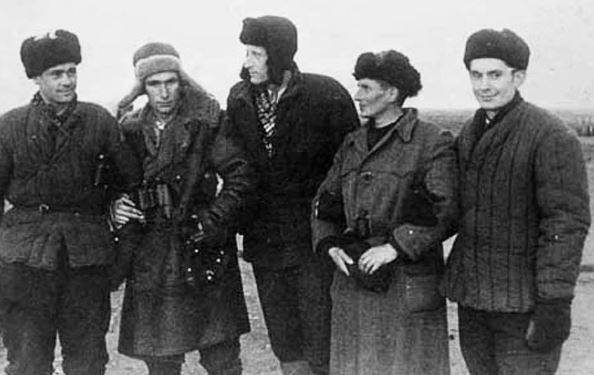
Specialists of the Helmut Grettrup group after the first tests of the rocket
A preliminary design of the R-10 missile with a range of 800 km, with a payload of 250 kg and an advanced design of the R-12 missile with a range of 2500 km, with a payload of 1 ton have been developed, a number of new structural elements have been proposed.
A preliminary design of the R-14 missile with a range of 3000 km, with a payload of 3 tons with replacement of gas rudders with a swinging combustion chamber and an advanced design of a cruise missile R-15 with a range of 3000 km, with a payload of 3 tons and radio control, has been developed, however, due to a number of unresolved problematic issues continuation of these works turned out to be inexpedient. "
An autonomous control system with radio correction for V-2 control has been designed, samples of devices of this system have been manufactured, and a technical design for an alpha-stabilizer has been developed. "
NII-88 single-plane simulators have been manufactured and commissioned, various radio engineering, aerodynamic and electrical equipment has been designed and manufactured. "
German specialists provided significant assistance in the restoration and reconstruction of German structures, their theoretical, design and experimental work were used in the design of domestic samples.
Due to the long separation from the modern achievements of science and technology, the work of German specialists is becoming less effective and at present they do not provide substantial assistance. "
Exodus of German specialists from Gorodomlya island
In accordance with the decision taken, the return of German specialists to Germany took place in several stages.
In December 1951, the first stage was sent, in June 1952 - the second, and in November 1953 the last echelon left for the GDR. This group was accompanied by Grettrup and a large number of Zeiss employees from Kiev, Krasnogorsk and Leningrad. And specialists from Junkers and BMW from Kuibyshev.
The Branch No. 1, abandoned by the Germans, was turned into a branch of the Gyroscopic Institute, where the production of precision gyroscopic devices was organized based on the latest principles.
After the "exodus of the Germans" in 1953-1954, four independent rocket design bureaus were created in different cities. Much later, in August 1956, the Korolev Design Bureau was created.
Experts on rocketry, assessing the activities of German specialists in the Soviet Union, note that the group led by Grettrup, in many ways ahead of their colleagues who worked in the United States under the leadership of Wernher von Braun, in their draft missile designs proposed technical solutions that became the basis for all future missile developers - detachable warheads, supporting tanks, intermediate bottoms, hot pressurization of fuel tanks, flat nozzle heads of engines, thrust vector control using engines and a number of other solutions.
Subsequent development of rocket engines, control systems and missile design around the world was largely based on the V-2 and using the ideas of the Grettrup group. For example, the Korolev rocket R-2 had a detachable warhead, pressurized tanks and the engine was a forced version of the P-1 engine, the prototype of which was the V-2.
The fate of the Germans who returned to the GDR developed differently.
A small part of them left for West Germany. They, of course, became interested in the Western special services. And they gave information about their work on Gorodomlya Island.
Grettrup also moved there. He was offered a leadership job in the United States with Wernher von Braun. He refused. During the interrogations of the American special services, they were interested in Soviet developments. He turned out to be a decent person, he spoke only about his work on the island. He refused to cooperate with the Americans and to work on the missile program. After which he ceased to be of interest to the special services.
German specialists then warmly recalled their life on Gorodomlya Island, where they and their families were provided at that time with fairly decent conditions for living and working.
And these conditions deserve separate consideration.
Information